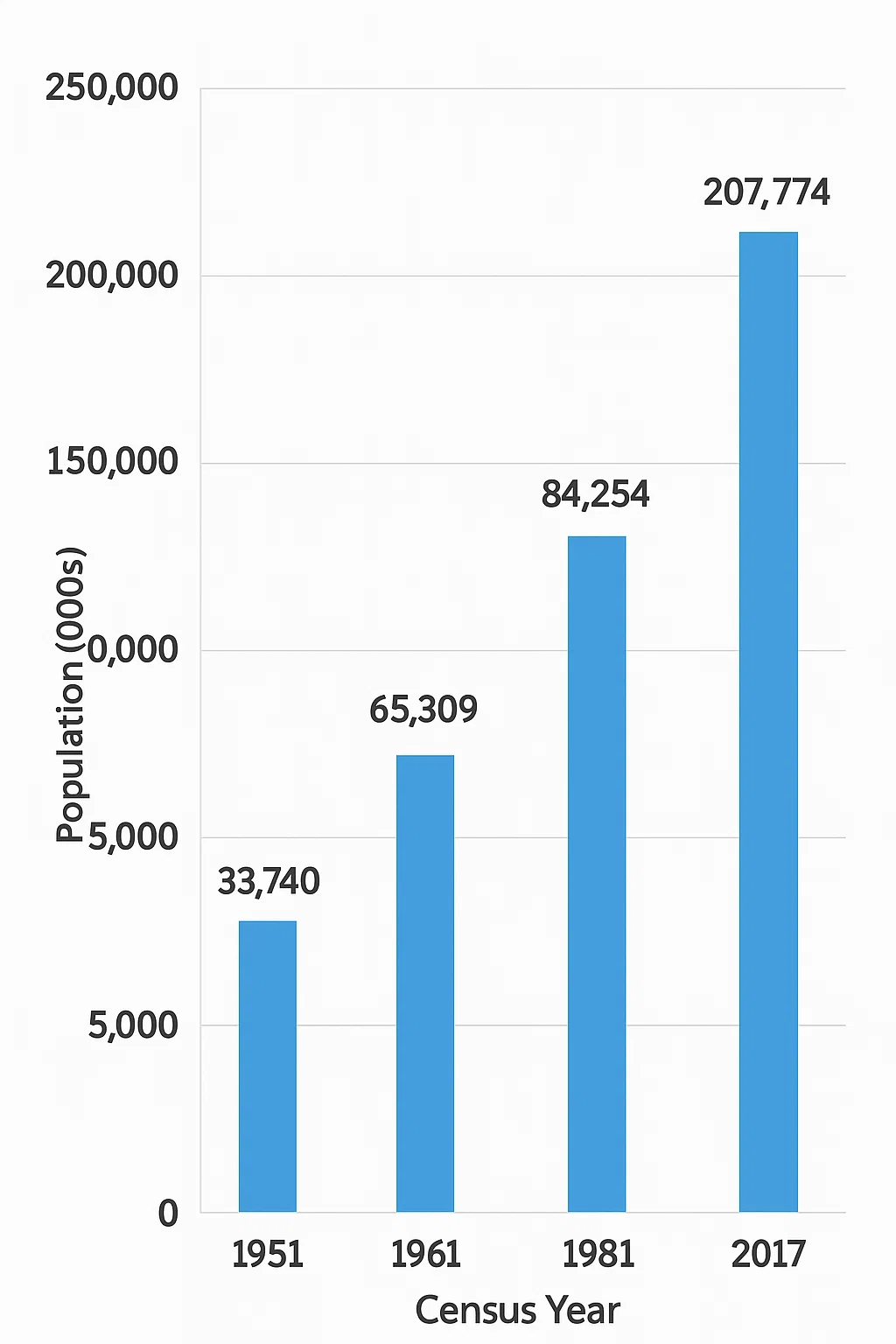The Sutlej River has once again captured national and international headlines after India released a large volume of water downstream, creating widespread concern in Pakistan. Stretching across borders, the Sutlej River is not only a geographical landmark but also a lifeline for millions of people living in Punjab’s fertile plains. Its waters irrigate farmlands, sustain industries, and provide daily drinking water to communities.
However, this same river can quickly transform from a blessing into a threat. Whenever India releases excess water, often due to monsoon rains or dam storage limits, downstream areas in Pakistan face immediate risks of flooding. This year, the situation has escalated further, prompting flood alerts, large-scale evacuations, and emergency responses by disaster management authorities.
This blog explores why India released more water into the Sutlej River, the devastating impacts it has on Pakistan, and what long-term measures can be taken to turn this recurring crisis into an opportunity for sustainable water management.
Why India Released More Water into Sutlej River
Climate and Monsoon Factors
The Indian monsoon season has become increasingly unpredictable due to climate change. Heavy rainfall in northern India often leads to swollen dams and rivers. The Sutlej River, which originates in Tibet and flows through Himachal Pradesh and Punjab, collects massive amounts of runoff during peak monsoon months. When the rain is excessive, Indian authorities are compelled to release water to avoid dam collapses or upstream flooding.
Dam Storage Pressures
Dams such as the Bhakra Dam and Harike Barrage regulate the flow of the Sutlej River. These reservoirs supply water to millions in India, but when they exceed safe storage levels, sudden discharges become unavoidable. Unfortunately, downstream Pakistan bears the brunt, as the water rushes into already vulnerable floodplains.
Indus Waters Treaty Obligations
Under the Indus Waters Treaty of 1960, India controls the Sutlej, Beas, and Ravi rivers, while Pakistan controls the Indus, Chenab, and Jhelum. Legally, India can release water, but the timing often raises concerns. Pakistan views uncoordinated water releases as both a humanitarian and political challenge, as the Sutlej River flows directly into its agricultural heartland.
Flood Threats from Sutlej River
Punjab’s Vulnerable Districts
The sudden surge in the Sutlej River has placed Punjab’s border districts such as Kasur, Bahawalnagar, and Okara on high alert. These low-lying areas are historically prone to flooding whenever water levels rise. Entire villages face the risk of submersion, forcing residents to abandon their homes.
NDMA Alerts and Evacuations
Pakistan’s National Disaster Management Authority (NDMA) has issued repeated warnings, urging communities along the Sutlej River to evacuate to safer locations. Emergency shelters are being established, but evacuation remains a challenge, particularly for farmers unwilling to leave behind livestock and crops.
Community Preparedness
While authorities sound alarms, many locals living near the Sutlej have developed their own coping strategies. Building raised platforms for animals, storing dry food, and relying on early warning systems are becoming survival practices. However, without coordinated national support, these efforts remain insufficient.
Agricultural Damage from Sutlej River Overflow
Impact on Crops
Agriculture is the backbone of Punjab, and the Sutlej irrigates thousands of acres of farmland. However, during uncontrolled releases, this blessing turns into a curse. Standing crops of rice, maize, and cotton suffer immediate damage as fields are submerged.
Soil Erosion and Fertility Loss
Floods from the Sutlej River wash away the topsoil layer, which is critical for agricultural fertility. Once eroded, fields lose their productivity for years, forcing farmers into financial despair.
Farmers’ Struggles
Farmers bear the heaviest losses, not only in crops but also in livestock and machinery. Many take loans to cultivate their fields, and when floods destroy the yield, they fall into debt traps. The recurring floods from the Sutlej River create a cycle of poverty that is difficult to break without government support.
READ MORE:
https://freedompakistan.com.pk/
Displacement and Humanitarian Crisis
Evacuation of Villages
When the Sutlej overflows, entire communities are uprooted. Families must abandon homes, schools, and farmlands. Evacuation is particularly hard for women, children, and the elderly, who require special care during the transition.
Relief Camps and Shelter Issues
While relief camps are set up, the facilities are often overcrowded, underfunded, and lacking in basic necessities. Access to clean drinking water, toilets, and healthcare is limited, creating a humanitarian emergency.
Psychological and Social Challenges
Beyond physical displacement, floods caused by the Sutlej bring psychological trauma. Losing one’s home or livelihood repeatedly creates long-term mental health challenges. Children lose access to schools, disrupting education and widening inequalities.
Infrastructure at Risk from Sutlej River Floods
Roads and Bridges
The destructive power of the Sutlej floods frequently washes away roads and weak bridges. Transport disruptions isolate villages, making it difficult for rescue teams and aid supplies to reach those in need.
Irrigation Systems
Canals connected to the Sutlej are damaged during floods, interrupting irrigation schedules for months. This adds to the long-term agricultural crisis.
Power Supply and Utilities
Flooded areas often face prolonged electricity shortages and communication breakdowns. Restoring these systems after a Sutlej flood requires significant government resources.
Health Concerns Linked to Sutlej River
Spread of Diseases
Standing water from the Sutlej becomes a breeding ground for mosquitoes, leading to dengue and malaria outbreaks. Waterborne diseases like cholera and diarrhea also spread quickly.
Clean Water Shortages
Ironically, during a flood, access to clean drinking water disappears. The contaminated Sutlej River forces people to consume unsafe water, further worsening health conditions.
Strain on Healthcare System
Local hospitals and clinics are ill-equipped to deal with the surge of patients after Sutlej River floods. Rural health workers often lack medicine, staff, and equipment.
Economic Consequences of Sutlej River Overflow
Loss of Livestock and Assets
Farmers lose cattle, goats, and poultry when floods hit, directly impacting rural economies dependent on animal husbandry.
Trade and Transport Disruption
When the Sutlej River disrupts highways and rail lines, supply chains collapse. Prices of essential goods increase, hurting consumers and businesses alike.
Government Relief Expenses
Floods caused by the Sutlej River force the government to spend billions on relief and rehabilitation, diverting resources away from development projects.
Historical Context of Sutlej River Disputes
Indus Waters Treaty 1960
The Indus Waters Treaty allowed India control over the Sutlej River, but it also made Pakistan dependent on Indian water management decisions. This dependency has been a source of tension.
Past Flood Incidents
History shows multiple instances where sudden water releases into the Sutlej River led to destructive floods in Pakistan. Each event reinforces mistrust between the two nations.
Political and Diplomatic Tensions
The Sutlej River has often been used in political debates between India and Pakistan, with accusations of weaponizing water flows for strategic purposes.
Pakistan’s Response and Preparedness
NDMA Action Plan
The NDMA continues to monitor the Sutlej River through satellite imagery and forecasting systems, issuing timely warnings to vulnerable districts.
Provincial Flood Control Measures
Punjab’s provincial government has set up embankments and conducted rescue drills to prepare for Sutlej River floods.
Role of Armed Forces
The Pakistan Army often assists in evacuations, setting up relief camps, and providing logistical support in Sutlej River flood emergencies.
Long-Term Solutions for Sutlej River Management
Building More Reservoirs
Pakistan urgently needs to build new reservoirs to regulate the flow of the Sutlej River and store excess water for future use.
Strengthening Embankments
Modern embankments and flood protection walls can help reduce the damage caused by sudden water releases from the Sutlej River.
Regional Cooperation on Water Issues
Dialogue between India and Pakistan over the Sutlej River must continue, with a focus on transparency, data-sharing, and climate adaptation strategies.
Conclusion
The Sutlej River stands as both a gift and a challenge for Pakistan. On one hand, it irrigates the country’s breadbasket; on the other, it threatens lives and livelihoods whenever uncontrolled water is released from India. This year’s flooding serves as another reminder that Pakistan must not only rely on short-term relief but also invest in long-term solutions.
The resilience of the people along the Sutlej River is commendable, but without robust infrastructure, sustainable water management, and international cooperation, these communities will remain at risk. To secure the future, Pakistan must act now—before the next surge of water once again tests the nation’s preparedness.












